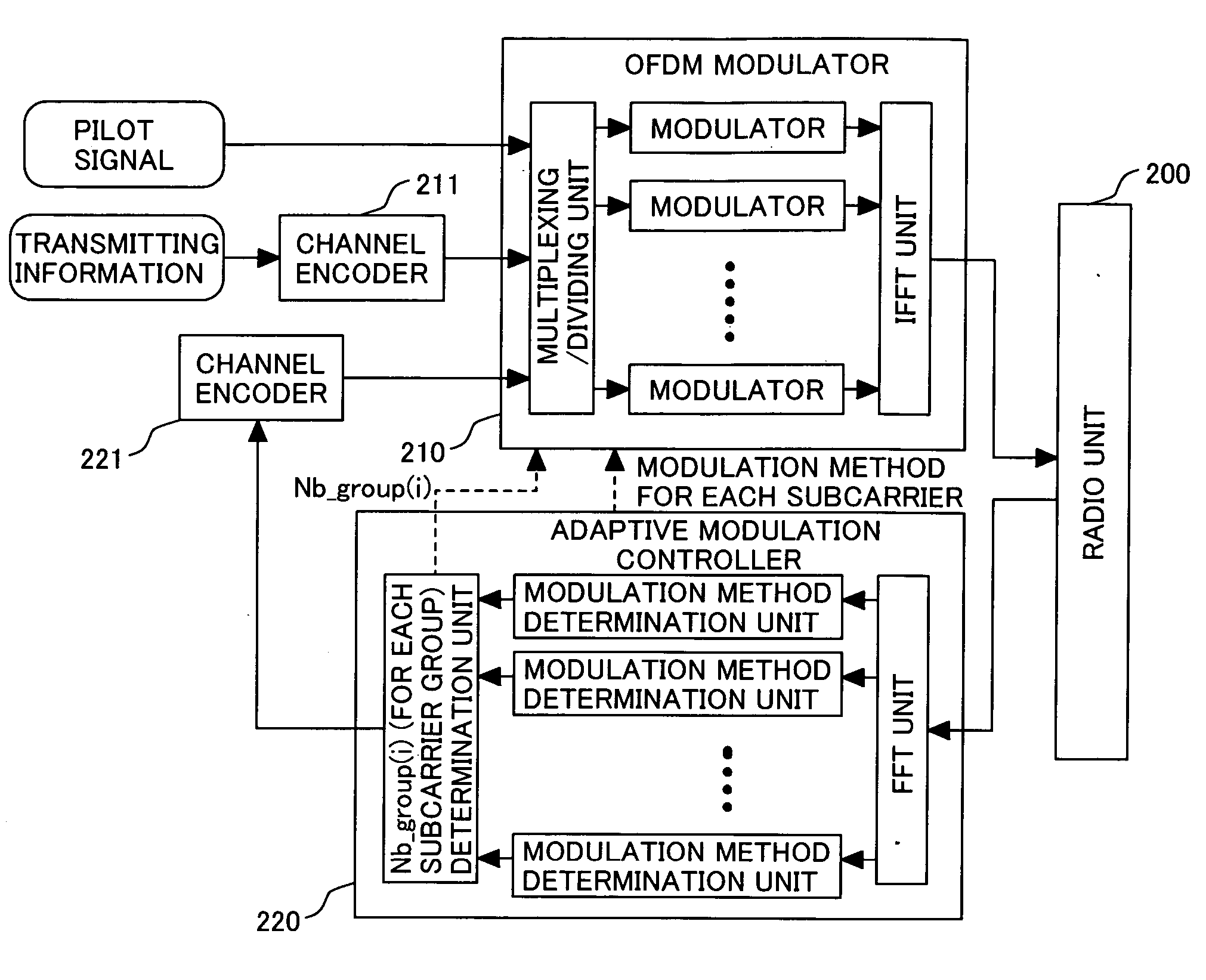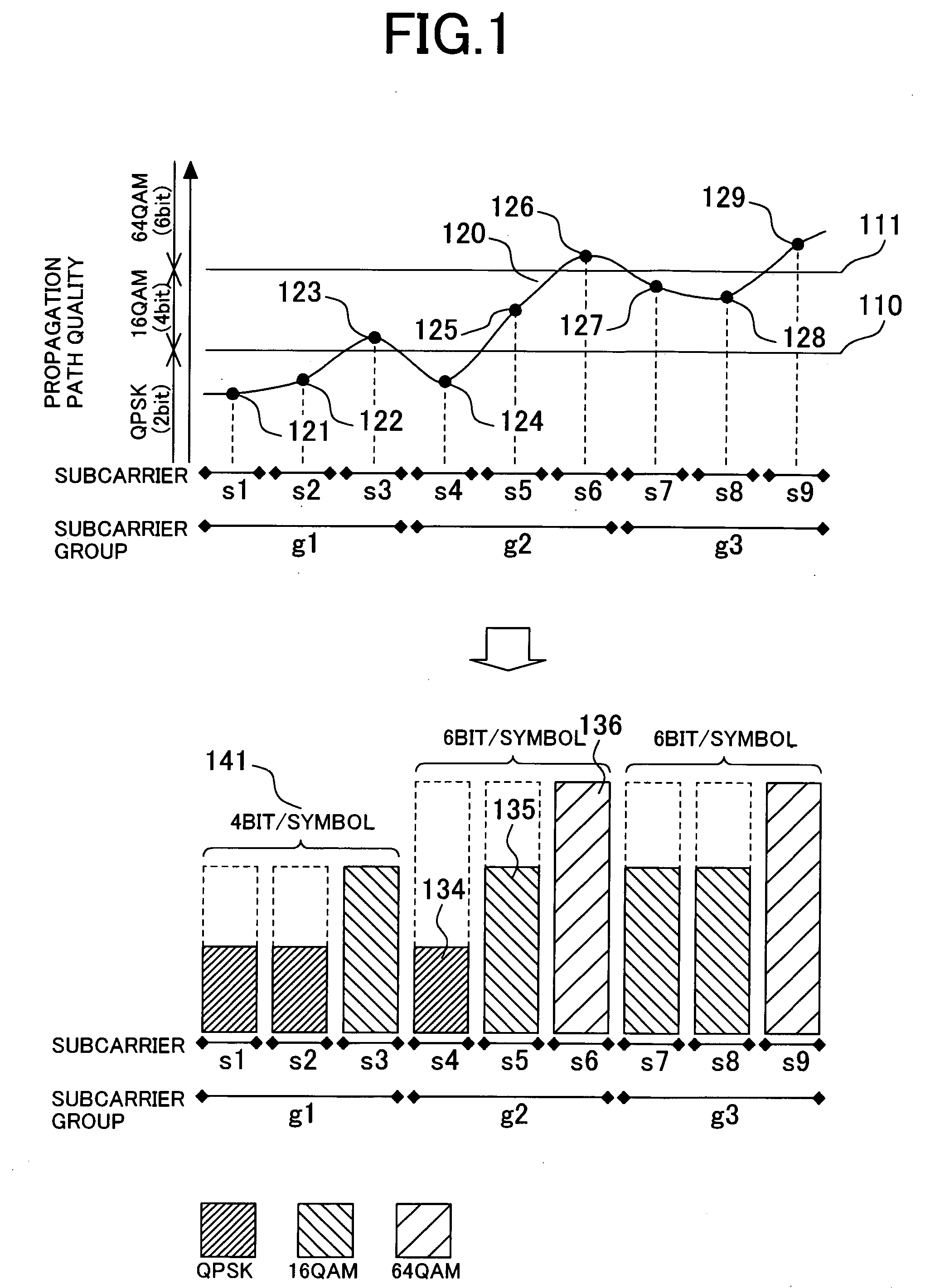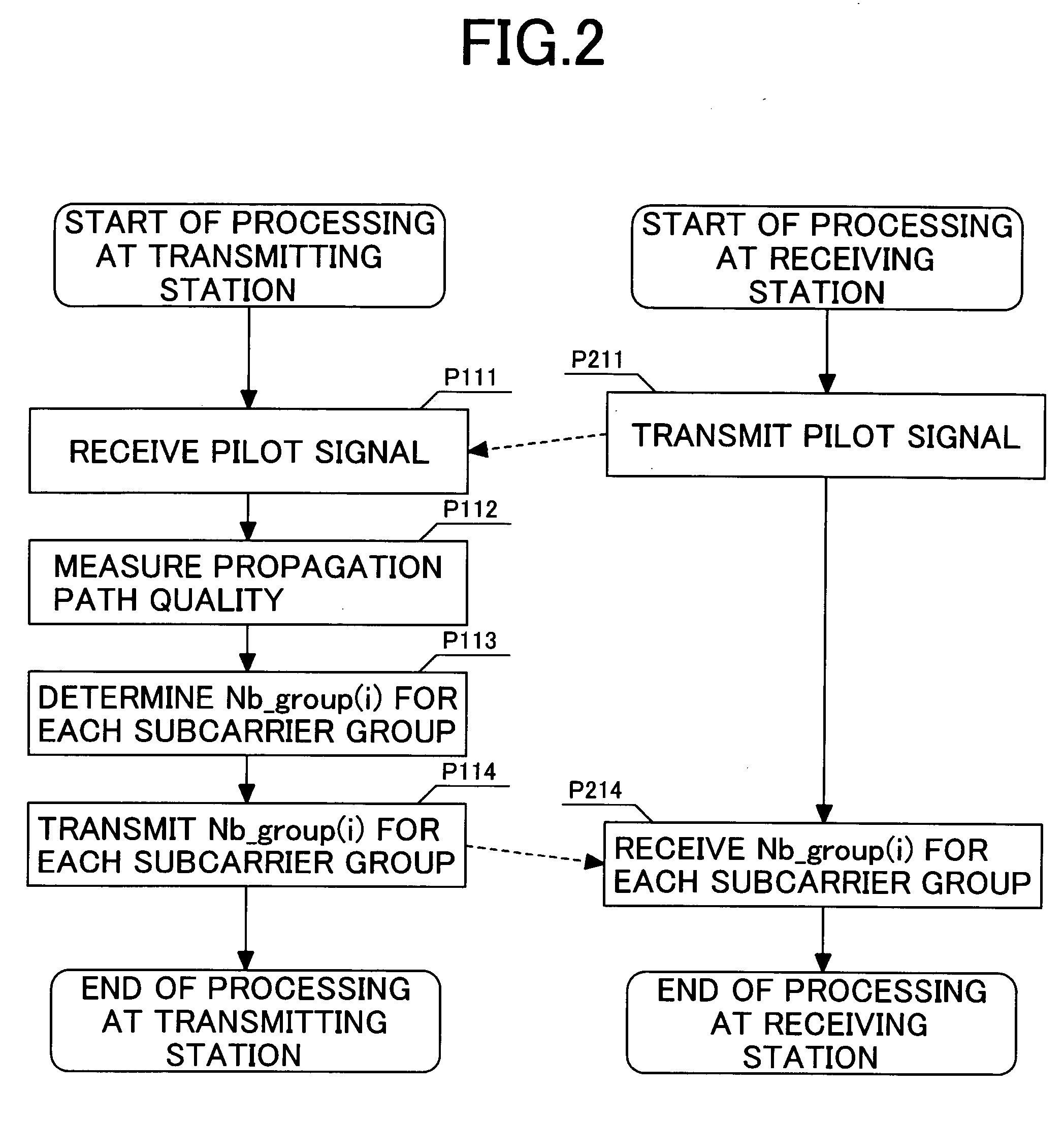Method and adaptive modulation in multi-carrier communication
a multi-carrier communication and adaptive modulation technology, applied in multi-frequency code systems, channel coding adaptation, signalling characterisation, etc., can solve the problem of additionally required control signals
- Summary
- Abstract
- Description
- Claims
- Application Information
AI Technical Summary
Benefits of technology
Problems solved by technology
Method used
Image
Examples
first embodiment
[0035] In an adaptive modulation method of a first embodiment according to the present invention, firstly a transmitting station identifies the quality 120 of a propagation path for communication. As a means by which a transmitting station identifies the propagation path quality 120, either the transmitting station may directly measure the quality of a propagation path or the transmitting station may be notified from a receiving station of the quality measured by the receiving station.
[0036] Next, a transmitting station employing an adaptive modulation method according to the present invention determines a modulation method for each subcarrier. In the selection of a modulation method for each subcarrier, the modulation method is selected so as to have the larger number of communicable bits per symbol according as the propagation path quality 120 of each subcarrier improves. For example, in the case of FIG. 1, on the basis of the thresholds 110 and 111, QPSK is selected when the prop...
second embodiment
[0048] In this case, in the adaptive modulation method of the second embodiment according to the present invention, firstly the receiving station identifies the quality 120 of a propagation path for communication. As a means by which a receiving station identifies a propagation path quality 120, either the receiving station may directly measure the propagation path quality or the receiving station may be notified from a transmitting station of the quality measured by the transmitting station.
[0049] Next, the receiving station employing an adaptive modulation method according to the present invention determines a modulation method for each subcarrier. In the selection of a modulation method for each subcarrier, the modulation method is selected so as to have a larger number of communicable bits per symbol according as the propagation path quality 120 of each subcarrier improves. For example, in the case of FIG. 1, on the basis of the thresholds 110 and 111, QPSK is selected when the ...
PUM
 Login to View More
Login to View More Abstract
Description
Claims
Application Information
 Login to View More
Login to View More - R&D
- Intellectual Property
- Life Sciences
- Materials
- Tech Scout
- Unparalleled Data Quality
- Higher Quality Content
- 60% Fewer Hallucinations
Browse by: Latest US Patents, China's latest patents, Technical Efficacy Thesaurus, Application Domain, Technology Topic, Popular Technical Reports.
© 2025 PatSnap. All rights reserved.Legal|Privacy policy|Modern Slavery Act Transparency Statement|Sitemap|About US| Contact US: help@patsnap.com



